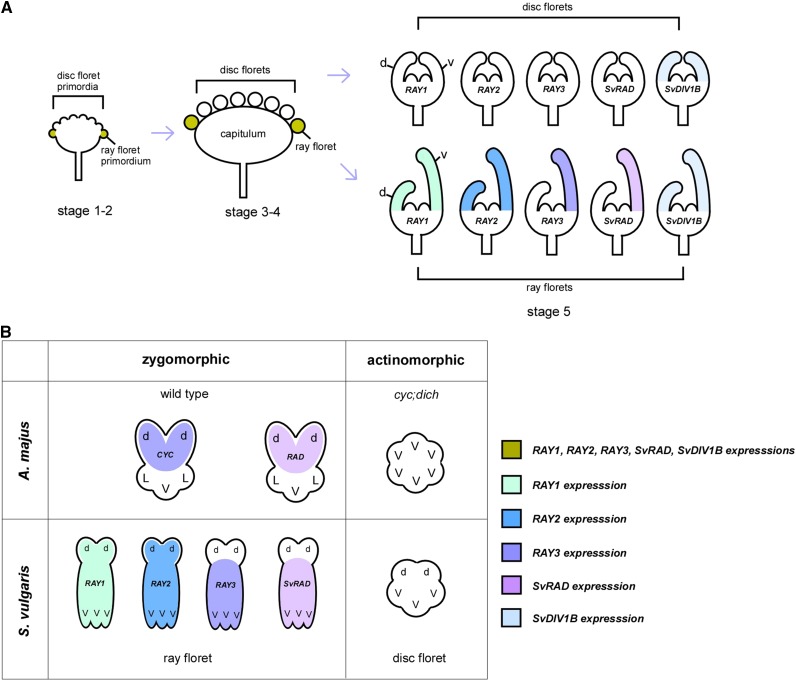Figure 7.
A schematic model showing flower symmetry gene expression during capitulum and floret development in S. vulgaris. A, Initially, RAY (CYC-like) genes, SvRAD and SvDIV1B are expressed in the emerging ray floret primordia to give the competency to develop bilateral symmetry in these florets, which sets them apart from radial disc florets. Later, as petals emerge in a ray floret, RAY3 and SvRAD are expressed in the ventral petals to set up the dorsoventral symmetry by promoting the ventral petal elongation. During ray ventral petal elongation, RAY1 and RAY2 are also present in the ventral domain and involved in petal growth (Kim et al., 2008). SvDIV1B appears to play a role in counterbalancing the RAY gene activities although its role in dorsal ray petal and disc floret development remains to be investigated. B, The expression patterns of CYC genes are diversified in S. vulgaris. To generate two different florets, RAY genes are exclusively recruited only to the zygomorphic ray florets. However, a subset of RAY genes such as RAY3 acquired ventral petal specific expression and promotes ventral petal growth. This is comparable to the CYC activity in the dorsal petal domain where it promotes dorsal petal growth to establish zygomorphy in A. majus. No RAY gene expression in actinomorphic disc florets is analogous to actinomorphic cyc;dich flowers. d, Dorsal petal; L, lateral petal; V, ventral petal.

